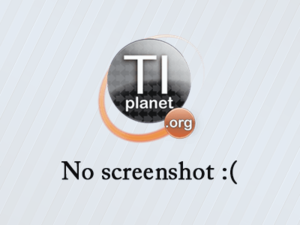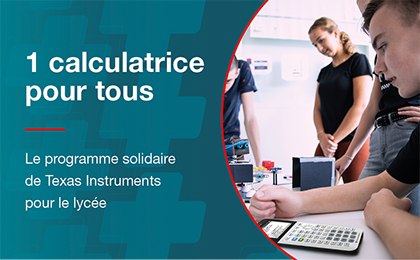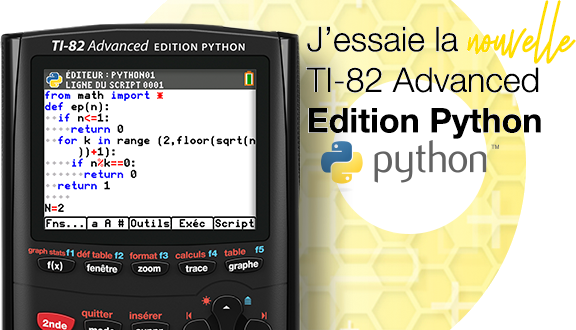Unit 4-2
DownloadTélécharger
Actions
Vote :
ScreenshotAperçu

Informations
Catégorie :Category: nCreator TI-Nspire
Auteur Author: KTS.A7
Type : Classeur 3.0.1
Page(s) : 1
Taille Size: 7.00 Ko KB
Mis en ligne Uploaded: 12/02/2025 - 13:20:47
Uploadeur Uploader: KTS.A7 (Profil)
Téléchargements Downloads: 3
Visibilité Visibility: Archive publique
Shortlink : http://ti-pla.net/a4502126
Type : Classeur 3.0.1
Page(s) : 1
Taille Size: 7.00 Ko KB
Mis en ligne Uploaded: 12/02/2025 - 13:20:47
Uploadeur Uploader: KTS.A7 (Profil)
Téléchargements Downloads: 3
Visibilité Visibility: Archive publique
Shortlink : http://ti-pla.net/a4502126
Description
Fichier Nspire généré sur TI-Planet.org.
Compatible OS 3.0 et ultérieurs.
<<
Ï 4.5 Plastics/Polymers Ë Processing Plasticoil is first extracted from the ground, then it is heated in a refinery which separated it into different chemicals called fractional distillation. Then different chemicals can be added to the polymer to change its properties. Ë Polylactid Acid(PLA)obtained from fermented plant starch from corn, cassava, sugar cane, or sugar beet. It is transparent and has similar properties to PET and PP Ë Thermoplastic Characteristicsductile, easily fabricated, easily drawn into fibers, easily recyclable Ë Polyethylene Propertiesmost common plastic there are different levels of PE such as low density, high density, medium density and linear-low density. It is also thee most common type of thermoplastic polymer resin of the polyester family, cheap to produce. Ë ABSlow cost engineering plastic, good resistance to impact, able to maintain stable original dimensions, strong and stiff, heat resistant Ë Melamine Resin Propertieshigh electrical resistivity, very low thermal conductivity, scratch resistant, stain resistant Ë Manufacturing Process (4.5 Plastics/Polymers) 3 types of manufacturing processWaiting, Addition, and Shaping techniques. WastingMaterial removal processes like sawing, drilling, and laser cutting. AdditionJoining materials together using bolts, screws, or adhesives. Shaping techniquesReshaping materials without material loss. Injection MoldingInjecting molten thermoplastic into a closed die mold. Steps1 - Plastic granules are placed into the hopper, and is pushed using a screw. 2 - The screw is then rotated via motor, forcing the polymmer towards the heaters where it's softened. 3 - the hydraulics then force the softened, and forced into the mould, making sure it is filled. 4 - After waiting a few seconds, the mould halves are removed and emptied. 5 - once emptied, the mould is closed and ready to create another model. ExtrusionContinuous process for hollow and solid products, low-cost with simple parts. Blow MoldingMaking large hollow objects by compressing air into a mold. Extrusion Blow ModlingTube passes between the mold, and expands. Ï Advantages Ë Low capital and tool costs Ë High production rate. Ï Disadvantages Ë Poor surface finish. Ë Limited wall thickness control. Injection Blow MoldingMolten plastic is injecting through the mold, and it expands. Ï Advantages Ë High production rate Ë little or no scrap to be trimmed. Ï Disadvantages Ë 2 molds needed Ë High initial capital costs. Stretch Blow MoldingRod blows compressed air longitudally while air is also ejected. Advantages Ï Low scrap and Labor costs. Ï Good surface finish. Disadvantages Ï Process needs to be controlled better. Rotational MoldingMold rotates in oven, applying centrifugal force to press plastic. Ï Advantages Ë Molds are lower cost to produce. Ë Lower waste. Ï Disadvantages Ë Material Costs can be Higher. ThermoformingHeating thermoplastic sheet to shape under vacuum. Ï Advantages Ë Short lead times. Ë Low costing tools. Ï Disadvantages Ë inability to form holes or threads CalendaringUsing rollers, to roll out thin sheets of plastic. Ï Advantages Ë Best quality plastic sheets Ë Adapted for heat-sensitive polymers. Ï Disadvantages Ë Holes or voids may occur for thin works. Ë Risk of air pockets. Compression MoldingPreheated material pressed between forces. Ï Advantages Ë Lower cost tooling. Ë Good for large parts. Ï Disadadvantages Ë Waste Created. Ë High Labor costs. Ï Modern Additive Manufacturing3D printing. Ï 4.6 Textiles Ë Fiberelongated hair like strand or continuous filament Natural FibersMaterials produced by plants or animals that can be spun into a thread rope or filament. (e.g. wool, linen, cotton, silk.). Are Hydrophilic, Elastic, and they Burn. Synthetic FibersMaterials originated from an industrial chemical process in which a polymer is forced through a spinneret (e.g. Nylon, Polyester, and Lycra) Are Hydrophobic, Inelastic, and Melt. PolymerA molecule made up of many monomers Ë Weaving KnittingForming of fabrics looping a single thread FeltingProcess of entangling fibers with each other. Lace-Makingopenwork, stitched fabric, patterned with holes, made form linen or silk Ï 4.7 Composites Ë Compositematerial made by combining two or more materials with different properties. AdvantagesHigh tensile strength, high strength to weight ratio, can be woven in different patterns (aesthet
[...]
>>
Compatible OS 3.0 et ultérieurs.
<<
Ï 4.5 Plastics/Polymers Ë Processing Plasticoil is first extracted from the ground, then it is heated in a refinery which separated it into different chemicals called fractional distillation. Then different chemicals can be added to the polymer to change its properties. Ë Polylactid Acid(PLA)obtained from fermented plant starch from corn, cassava, sugar cane, or sugar beet. It is transparent and has similar properties to PET and PP Ë Thermoplastic Characteristicsductile, easily fabricated, easily drawn into fibers, easily recyclable Ë Polyethylene Propertiesmost common plastic there are different levels of PE such as low density, high density, medium density and linear-low density. It is also thee most common type of thermoplastic polymer resin of the polyester family, cheap to produce. Ë ABSlow cost engineering plastic, good resistance to impact, able to maintain stable original dimensions, strong and stiff, heat resistant Ë Melamine Resin Propertieshigh electrical resistivity, very low thermal conductivity, scratch resistant, stain resistant Ë Manufacturing Process (4.5 Plastics/Polymers) 3 types of manufacturing processWaiting, Addition, and Shaping techniques. WastingMaterial removal processes like sawing, drilling, and laser cutting. AdditionJoining materials together using bolts, screws, or adhesives. Shaping techniquesReshaping materials without material loss. Injection MoldingInjecting molten thermoplastic into a closed die mold. Steps1 - Plastic granules are placed into the hopper, and is pushed using a screw. 2 - The screw is then rotated via motor, forcing the polymmer towards the heaters where it's softened. 3 - the hydraulics then force the softened, and forced into the mould, making sure it is filled. 4 - After waiting a few seconds, the mould halves are removed and emptied. 5 - once emptied, the mould is closed and ready to create another model. ExtrusionContinuous process for hollow and solid products, low-cost with simple parts. Blow MoldingMaking large hollow objects by compressing air into a mold. Extrusion Blow ModlingTube passes between the mold, and expands. Ï Advantages Ë Low capital and tool costs Ë High production rate. Ï Disadvantages Ë Poor surface finish. Ë Limited wall thickness control. Injection Blow MoldingMolten plastic is injecting through the mold, and it expands. Ï Advantages Ë High production rate Ë little or no scrap to be trimmed. Ï Disadvantages Ë 2 molds needed Ë High initial capital costs. Stretch Blow MoldingRod blows compressed air longitudally while air is also ejected. Advantages Ï Low scrap and Labor costs. Ï Good surface finish. Disadvantages Ï Process needs to be controlled better. Rotational MoldingMold rotates in oven, applying centrifugal force to press plastic. Ï Advantages Ë Molds are lower cost to produce. Ë Lower waste. Ï Disadvantages Ë Material Costs can be Higher. ThermoformingHeating thermoplastic sheet to shape under vacuum. Ï Advantages Ë Short lead times. Ë Low costing tools. Ï Disadvantages Ë inability to form holes or threads CalendaringUsing rollers, to roll out thin sheets of plastic. Ï Advantages Ë Best quality plastic sheets Ë Adapted for heat-sensitive polymers. Ï Disadvantages Ë Holes or voids may occur for thin works. Ë Risk of air pockets. Compression MoldingPreheated material pressed between forces. Ï Advantages Ë Lower cost tooling. Ë Good for large parts. Ï Disadadvantages Ë Waste Created. Ë High Labor costs. Ï Modern Additive Manufacturing3D printing. Ï 4.6 Textiles Ë Fiberelongated hair like strand or continuous filament Natural FibersMaterials produced by plants or animals that can be spun into a thread rope or filament. (e.g. wool, linen, cotton, silk.). Are Hydrophilic, Elastic, and they Burn. Synthetic FibersMaterials originated from an industrial chemical process in which a polymer is forced through a spinneret (e.g. Nylon, Polyester, and Lycra) Are Hydrophobic, Inelastic, and Melt. PolymerA molecule made up of many monomers Ë Weaving KnittingForming of fabrics looping a single thread FeltingProcess of entangling fibers with each other. Lace-Makingopenwork, stitched fabric, patterned with holes, made form linen or silk Ï 4.7 Composites Ë Compositematerial made by combining two or more materials with different properties. AdvantagesHigh tensile strength, high strength to weight ratio, can be woven in different patterns (aesthet
[...]
>>













